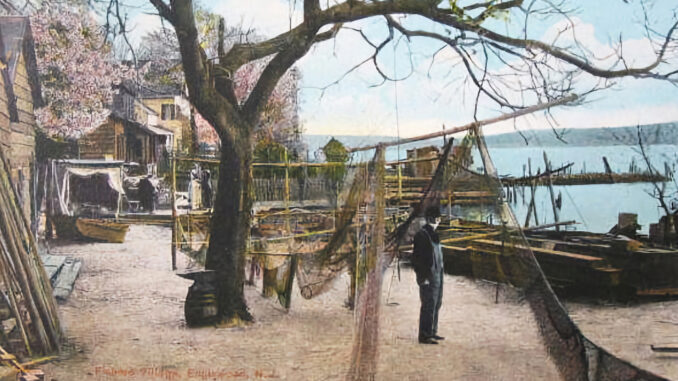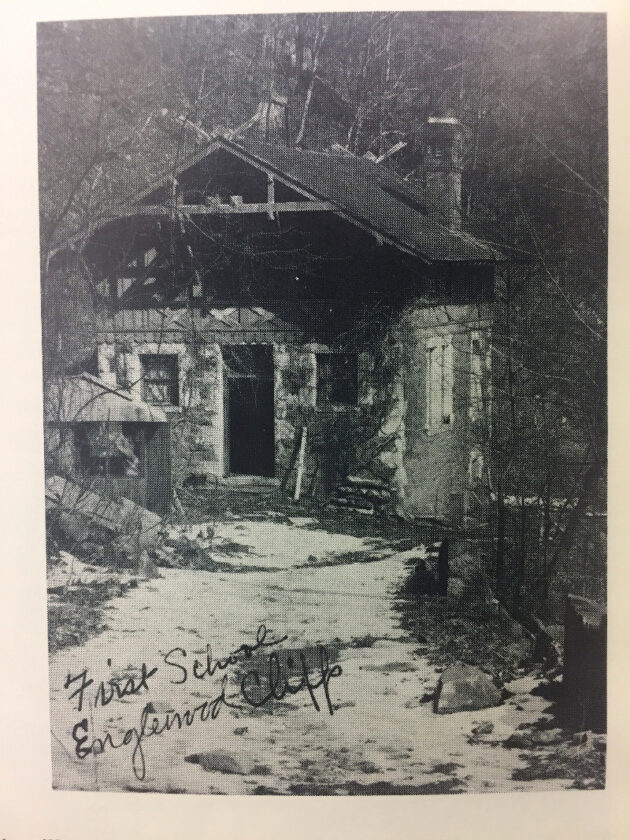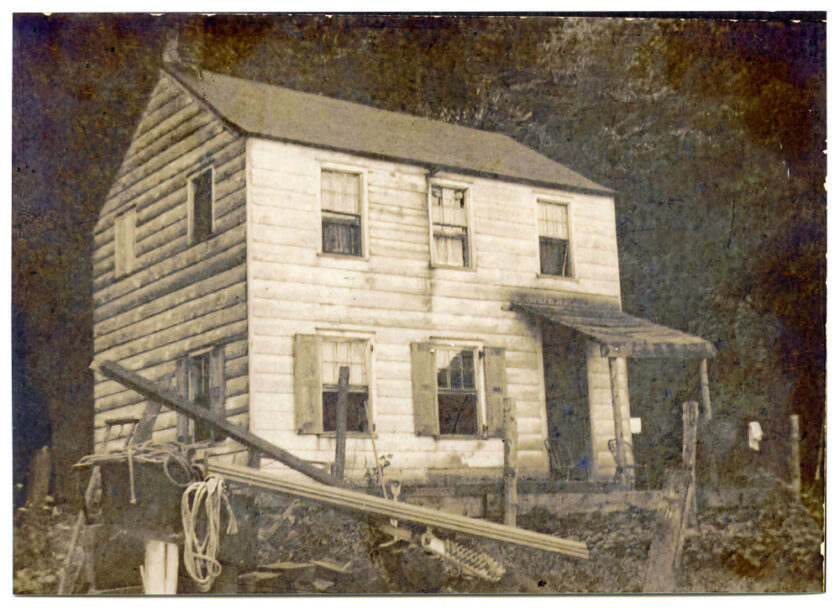
ENGLEWOOD CLIFFS—In the 19th century, hundreds of people living in small fishing villages, collectively called Undercliff colony, populated the shores of the Hudson River at the base of the towering Palisades cliffs.
The hard-working and industrious people occupying small homes built along the river earned their living by fishing, quarrying the stone of the Palisades, and working in the mills that were part of daily life on the water. For a month each spring, the shad run on the Hudson was a huge event for families and fishermen. The fishing profits from the shad run could sustain an Undercliff family for a year.
Undercliff was the location of the first school to be built in Englewood Cliffs. Before it was constructed, the only option for the children of Undercliff had been to walk to Lincoln School in Englewood. The presence of a school so close to home was integral to opening minds and opening doors for children growing up in the fishing village.

The man who built the Undercliff School was William B. Dana, a publisher who became Englewood Cliffs’ second mayor. Dana and his wife Katherine bought a tract of land on the Palisades in the 1860s and built for themselves a large stone manse they named Greycliff (later demolished to make way for the Palisades Interstate Parkway). William and Katherine were known as people of culture who carried out charitable deeds in a quiet, unassuming manner. The Danas got to know their neighbors below the cliffs and Mrs. Dana established a Sunday School in her own drawing room.
John Allison, son of the borough’s first mayor, in 1937 gave his recollections of the Undercliff School as follows: “[It was] a tiny whitewashed building, part of its foundation consisting of a sea wall skirting the shore. Here the bearded Samuel Moses held forth as schoolmaster to the community’s children. It was said of Moses that he was as meek as his Biblical predecessor.”

By the turn of the 20th century, about 10 families lived at Undercliff and sent their children to the school. These included the Crums, Hiltons, Jacksons, Mortons, O’Bleams, Van Wagoners, Normans, and Bloomers. In 1896, Undercliff resident Miss Margaret E. Van Wagoner took up a teaching post at the school for $45 per month.
The beginning of the Palisades Interstate Park in 1900 brought big changes. The riverfront was transformed into campgrounds and bathing and picnic areas that drew thousands of visitors from New York City arriving daily by ferries. The Park Commission bought up waterfront properties as they became available when owners died or moved, and eventually Undercliff dwindled to a handful of residents before disappearing completely.
However, there is yet another chapter in the history of the old Undercliff School, which will be discussed on this page in the next edition of Northern Valley Press.
